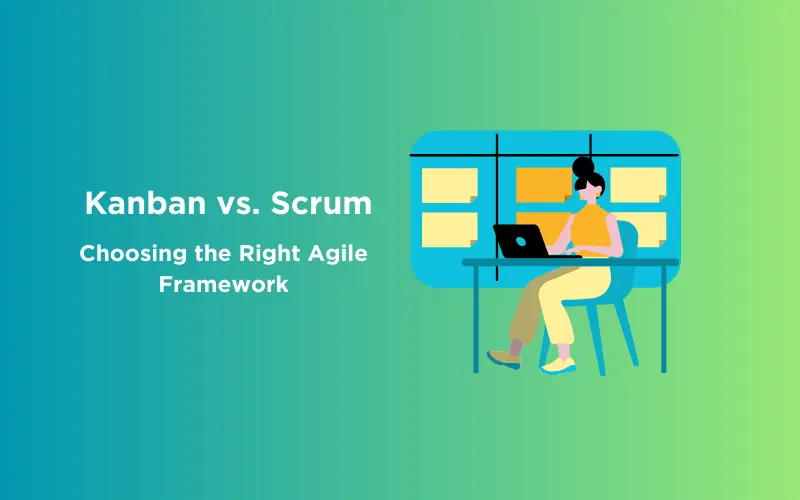
Top Social Impact Project Ideas for Students
Mar 06, 2025 5 Min Read 38777 Views
(Last Updated)
Are you a student eager to use your technical skills for good? Technology offers incredible opportunities to address some of the most pressing social issues today. This blog will guide you through various social impact project ideas, from enhancing health and wellness to promoting environmental sustainability. These projects can help you make a significant difference.
Get ready to explore how you can transform your passion into positive change!
Table of contents
- What is a Social Impact?
- Top Social Impact Project Ideas for Students
- Health and Wellness Projects
- Environmental Sustainability Projects
- Education Enhancement Projects
- Community Empowerment Projects
- Accessibility and Inclusion Projects
- Conclusion
- FAQs
- How do I choose the right social impact project?
- What resources are available for students working on social impact projects?
- How can I measure the impact of my social impact project?
What is a Social Impact?
Social impact refers to the effect someone’s actions have on the well-being of a community or society. It encompasses both positive and negative consequences that result from activities undertaken by businesses, non-profits, governments, or individuals. The focus is often on creating positive change by addressing societal issues such as poverty, education, health, equality, and the environment.
Here are a few key aspects of social impact:
- Purpose-driven: Social impact initiatives are typically designed to solve specific societal problems or improve conditions in areas such as healthcare, education, and economic development.
- Measurable Outcomes: Effective social impact strategies include clear goals and metrics to assess the effectiveness of the interventions. This could include measuring improvements in education levels, reductions in pollution, or other tangible outcomes.
- Sustainability: Efforts are made not only to address immediate needs but also to ensure long-term sustainability. This might involve building local capacities, improving infrastructure, or fostering policy changes that support ongoing benefits.
- Community Involvement: Genuine social impact requires involving those who are affected by the issues. This includes listening to their needs, engaging them in the solution development process, and making efforts to ensure that interventions are culturally and contextually appropriate.
- Innovation and Collaboration: Many social impact initiatives involve innovative approaches that challenge the status quo. Collaboration among different sectors (public, private, and non-profit) is also common to use various strengths and perspectives for broader impact.
Understanding and measuring social impact helps individuals focus their efforts where they can achieve the most significant benefit, ensuring that resources are used effectively to improve lives and foster a sustainable future.
Also Read: Top 30 Mini Project Ideas For College Students [UPDATED]
Now that we understand what a social impact is, let’s explore some top project ideas for students to make a real difference.
Top Social Impact Project Ideas for Students
The following list of social impact project ideas for students offers a variety of ways to apply technical skills toward making a significant positive difference in various sectors of society. Here’s a deeper look into each category and the specific projects it includes:
1. Health and Wellness Projects
Health and wellness projects use technology to tackle significant health-related challenges. By developing solutions that improve access to medical care, support mental health, and promote physical fitness for all, including those with special needs, students can make a direct impact on individual well-being and public health outcomes.
These projects not only address the immediate health needs but also work towards long-term sustainable health practices that can be scaled and adapted across different regions and populations. Engaging in these projects encourages a preventative approach to health, aiming to make wellness a universal priority.

Projects
A. Telehealth Solutions
Develop apps that provide remote health services, making healthcare accessible in rural and underserved areas.
Features
- Real-time communication between patients and healthcare providers.
- Integration with health monitoring devices.
- Secure storage and access to medical records.
- Appointment scheduling and reminders.
- Accessibility features for users with disabilities.

B. Mental Health Apps
Create applications that help users monitor their mental health and access necessary resources like therapy and support groups.
Features
- Mood tracking and analysis.
- Resources for crisis intervention and support.
- Personalized therapy sessions via AI or video calls.
- Activity recommendations based on mood.
- Privacy-first approach to sensitive data.

Ready to transform your future? Enroll in GUVI’s Artificial Intelligence & Machine Learning course today and start your journey towards becoming a tech innovator!
2. Environmental Sustainability Projects
Environmental sustainability projects are at the forefront of using technology to combat ecological degradation and promote sustainable living. By developing systems that monitor energy use, enhance waste management, and innovate agriculture, students contribute to creating a more sustainable environment.
These initiatives are important for reducing the carbon footprint, managing resources more efficiently, and supporting sustainable practices across industries. Engaging in these projects helps students to develop solutions that balance human needs with planetary health, fostering a culture of responsibility and innovation in environmental stewardship.

Projects
A. Energy Monitoring Systems
Build tools to help users monitor and reduce their energy consumption, supporting efforts to decrease overall carbon emissions.
Features
- Real-time energy consumption tracking.
- Tips and insights on reducing energy use.
- Comparison with similar homes or businesses.
- Automated control of home appliances.
- Energy-saving recommendations.

Also Read: 9 Amazing Real-World Data Engineering Applications Around Us!
B. Waste Management Apps
Develop apps designed to improve recycling rates and composting efforts by providing users with easy-to-follow waste sorting information and local disposal options.
Features
- Barcode scanning for product disposal instructions.
- Location-based recycling and composting solutions.
- Rewards and gamification to encourage proper waste disposal.
- Educational content on waste reduction.
- Community challenges and leaderboards.

Also Read: Top 17 Best IoT Project Ideas
3. Education Enhancement Projects
In education, technology opens up vast opportunities to enhance learning experiences, making education more accessible and engaging. Projects focused on developing e-learning platforms, educational games, and language-learning tools aim to bridge educational gaps and cater to diverse learning styles.
By addressing the needs of various learning communities, these projects foster inclusivity and adaptability in educational methods. Students involved in these projects learn to create impactful educational tools that can transform traditional learning paradigms and promote lifelong learning.

Projects
A. E-Learning Platforms
Develop accessible and engaging online learning tools that make education more flexible and interactive for students across the globe.
Features
- Adaptive learning technologies that cater to individual learning speeds.
- Multimedia content integration (videos, interactive simulations).
- Real-time feedback and assessments.
- Collaboration tools for students and teachers.
- Mobile and offline access capabilities.

B. Educational Games and Apps
Create fun, interactive games that incorporate educational content, making learning enjoyable for children and promoting cognitive development.
Features
- Engaging and age-appropriate content.
- Progress tracking and adaptive challenges.
- Parental control and monitoring features.
- Multiplayer options to learn with peers.
- Rewards and certificates for achievements.

Also Read: Build your own personal voice assistant like Siri, or Alexa using Python
4. Community Empowerment Projects
Community empowerment projects utilize technology to strengthen community bonds, support local economies, and enhance civic engagement. These projects play an important role in building resilient communities. They provide the tools needed for communities to thrive independently, promoting economic development and community well-being.
Students working on these projects gain insights into the dynamics of community building and the power of collaborative efforts.

Projects
A. Crowdfunding Platforms for Social Causes
Develop online platforms that enable individuals and organizations to fundraise for social causes effectively, facilitating community support and engagement.
Features
- User-friendly fundraising tools.
- Social media integration for campaign promotion.
- Transparent tracking of fund usage.
- Support for multiple payment methods.
- Impact stories and updates from project beneficiaries.

Also Read: Top 13 Backend as a Service (BaaS) Providers
B. Local Business Support Apps
Create applications that help small businesses thrive by connecting them with local customers and providing tools for digital presence and e-commerce.
Features
- Business profiles with product listings and services.
- Geo-targeting for localized promotions.
- Customer reviews and feedback systems.
- Integration with local delivery services.
- Analytics for business performance.

Also Read: 5 Important Pillars of Social Media Marketing
5. Accessibility and Inclusion Projects
Accessibility and inclusion projects focus on ensuring that technology is usable for everyone, including those with disabilities. These projects challenge students to think critically about design and functionality, pushing for innovations that cater to a broad spectrum of human needs.
By developing assistive technologies, translating apps for sign language, and advocating for inclusive design, these projects aim to dismantle barriers and promote equality in access to technology and information. This not only enhances the usability of technology but also champions the rights of all individuals to participate fully in society.

Projects
A. Assistive Technology for the Disabled
Develop innovative tools designed to improve the quality of life for people with disabilities, enhancing their independence and social inclusion.
Features
- Customizable interface options for various disabilities.
- Integration with existing assistive devices.
- Real-time assistance and support.
- User-driven design for maximum usability.
- Collaboration with disability advocates for continual improvement.

B. Sign Language Translation Apps
Create applications that provide real-time translation of sign language, breaking down communication barriers for the deaf and hard of hearing.
Features
- Real-time video recognition and translation.
- Compatibility with multiple sign languages.
- Learning modules for sign language education.
- Community features for user engagement.
- Portable and accessible across multiple devices.

Also Read: 10 Innovative Project Ideas for Students to Boost Creativity and Skills
Each of these project ideas not only allows students to apply their technical knowledge in meaningful ways but also helps foster a sense of responsibility and contribution toward a better society. Through these projects, students can gain valuable experience while also making a tangible difference in various important areas.
Are you ready to become a tech innovator? Join GUVI’s Full Stack Development Course and get into a comprehensive learning experience that ensures you’re job-ready. This course is crafted for both working professionals and fresh graduates, offering extensive training, real-world project work, and placement support. With flexible learning options and multilingual support, it’s designed to guide you every step of the way until you secure your place in the IT industry. Don’t wait—start your journey today!
Conclusion
We encourage all students to take initiative, collaborate with peers, and start projects that not only drive social change but also foster a sustainable future. Your efforts can inspire others, create lasting impacts in communities, and ultimately contribute to a better world. So, choose a project that resonates with you and start making a difference today!
Must Explore: Top 10 Unique Project Ideas for College Students
FAQs
Identify your passions and assess your skills to find a project that addresses a genuine community need. Collaborate with mentors and peers to refine your idea based on practical insights and resources available.
Students can access academic support, online educational resources, funding opportunities, and professional networks. Many universities and organizations also provide the necessary technologies and mentorship to help bring projects to fruition.
Set specific objectives and collect data before and after project implementation. Use surveys or interviews for feedback and analyze the results to assess effectiveness and areas for improvement. Sharing outcomes with stakeholders can also provide additional insights for future projects.






















![Top Full Stack Web Developer Coding Projects in 2025 [With Source Code] 18 full stack web developer coding projects](https://www.guvi.in/blog/wp-content/uploads/2021/10/Top-Full-Stack-Web-Developer-Coding-Projects-With-Source-Code.png)

![Top 10 React Native Project Ideas [With Source Code] 20 React Native Project Ideas](https://www.guvi.in/blog/wp-content/uploads/2024/10/React_Project_Ideas.png)
![9 Compelling Project Ideas for Frontend Development [With Source Code] 21 Feature image - Comprehensive List of Project Ideas for Frontend Development](https://www.guvi.in/blog/wp-content/uploads/2024/02/Project-Ideas-for-Frontend-Development.webp)





I want some idea to some thing and I got